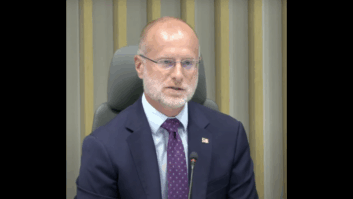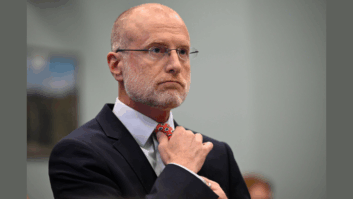Churches in the United States should not look to the Federal Communications Commission to ease power restrictions on unlicensed radio signals that many churches now use to reach congregations.
FCC Chairman Ajit Pai has replied to a letter from Rep. Mark Green. The congressman from Tennessee sought pandemic waivers for houses of worship to transmit signals exceeding power levels allowed under Part 15 of the rules.
As Radio World has reported, COVID-19 has caused a great spike in interest by churches and other organizations to use FM and AM radio to reach people who wish to gather and yet stay physically spread out.
Because broadcast licenses are so hard to come by, unlicensed Part 15 systems naturally have attraction; but their effective coverage is limited. And providers of such systems, as well as licensed broadcasters, have expressed concern that new users don’t understand or choose to follow the relevant rules.
[Read RW’s recent coverage of Part 15 broadcasting and related opinions.]
Green in June asked for a temporary waiver allowing FM transmitters to operate with an effective range greater than 200 feet. He noted that churches were looking for innovative ways to gather and should be “be able to operate without the fear of heavy penalties threatening their services.”
Green — like Pai a Republican who speaks about the need for less regulation — wrote, “The coronavirus pandemic has forced houses of worship to find alternative ways to exercise [their] freedoms. The least the Federal government can do is to get out of their way, so they can serve their communities without fear of violating a government rule.”
But Pai said no. He wrote to Green, “These devices can be useful in providing a way for churches to continue to connect with congregations during this period of social distancing. However, one of the fundamental responsibilities that Congress placed on the commission under the Communications Act of 1934 is the protection of licensed stations. To this end, the commission long ago established carefully calibrated rules regarding the specifications under which licensed and unlicensed FM stations may operate.”
The chairman said that when granting applications for new FM stations or modifications of existing ones, FCC rules require that applicants demonstrate that they would not cause harmful interference, and applications must be supported with detailed engineering information.
“Additionally, our rules provide for public notice of these applications, and afford potentially impacted stations the opportunity to object to these applications if they believe that they will receive interference.”
Because of these requirements, Pai continued, Part 15 devices must stay within strict confines of FCC rules in order to protect licensed stations from harmful interference.
“A waiver of these requirements would undermine the commission’s goal of ensuring the integrity of already crowded FM radio spectrum, and would deny existing licensees the opportunities to defend their costly investments.”
Pai told Green that he is “proud of the work that licensed broadcasters have done during the pandemic. They have been providing vital information to listeners, while facing an unprecedented challenge from loss of advertising revenue. Moreover, as the recent tropical storms in the Gulf of Mexico and the Atlantic have demonstrated, licensed broadcasters provide up-to-the-minute information on natural disasters and are required to participate in the Emergency Alert System.”
These services and others, Pai wrote, could be hurt by waivers to allow churches to operate Part 15 devices above current power limits.
“I understand that this makes it more challenging for churches during this difficult time, but I want to emphasize that there are options available,” Pai continued.
“Churches can contact local broadcast stations to see if any would be willing to air their weekly services. Indeed, many local stations partnered with house of worship to broadcast Easter services. Churches also could explore using multiple Part 15 devices to cover a larger area if they continue to provide ‘drive-in’ style services.
“Or churches could look into ‘call-to-listen’ services where congregants would only need a phone to hear the service. Finally, if congregants have access to broadband at home, there are multiple, free streaming services that could be used (and have been used across the country).”







